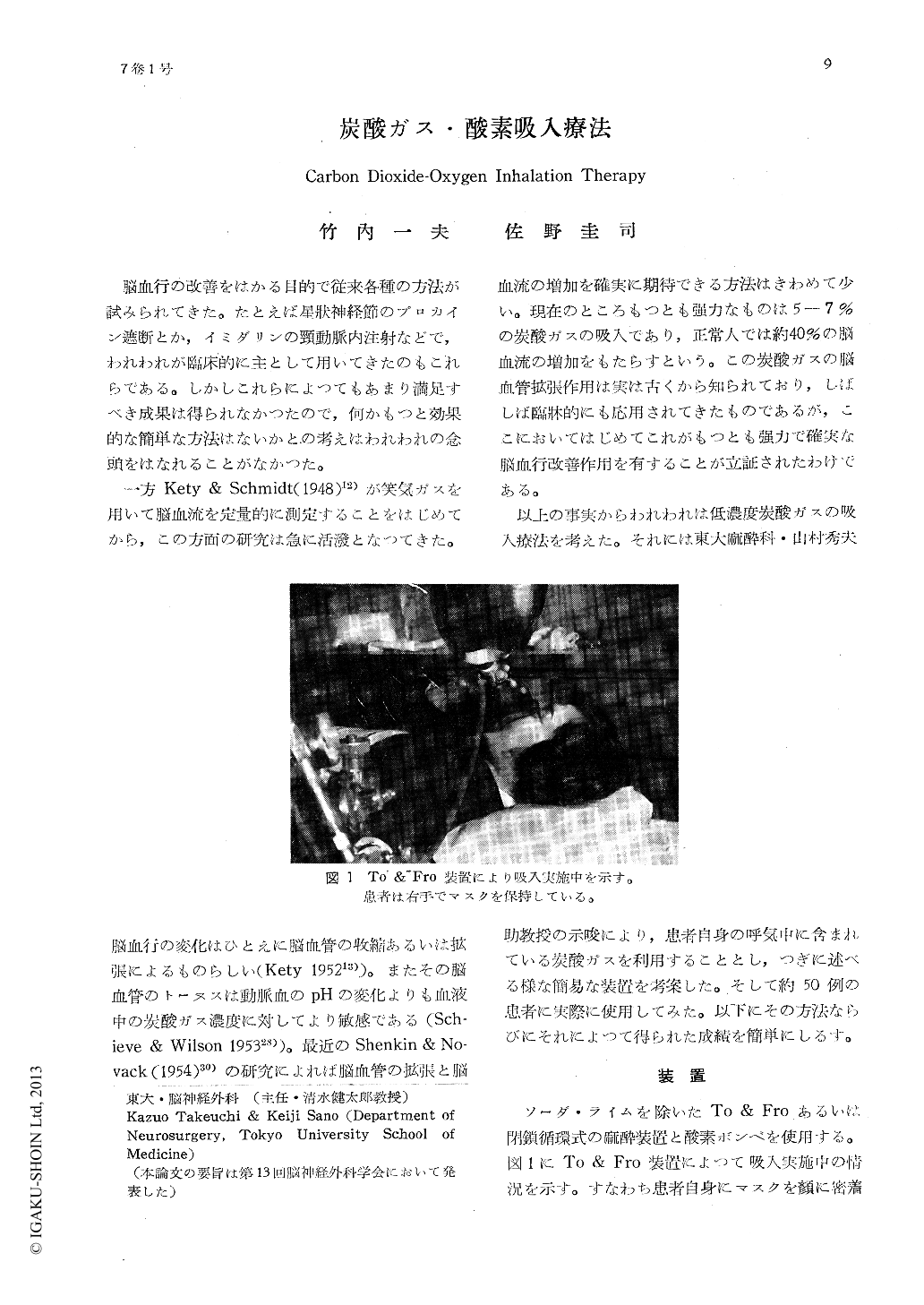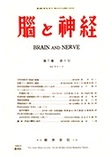Japanese
English
- 有料閲覧
- Abstract 文献概要
- 1ページ目 Look Inside
脳血行の改善をはかる目的で従来各種の方法が試みられてぎた。たとえば星状神経節のプロカイン遮断とか,イミダリンの頸動脈内注射などで,われわれが臨床的に主として用いてきたのもこれらである。しかしこれらによつてもあまり満足すべき成果は得られなかつたので,何かもつと効果的な簡単な方法はないかどの考えはわれわれの念頭をはなれることがなかつた。
一方Kety & Schmidt (1948)12)が笑気ガスを用いて脳血流を定量的に測定することをはじめてから,この方面の研究は急に活溌となつてきた。脳血行の変化はひとえに脳血管の收縮あるいは拡張によるものらしい(Kety 195213)))。またその脳血管のトーヌスは動脈血のpHの変化よりも血液中の炭酸ガス濃度に対してより敏感である(Sch-ieve & Wilson 195328))。最近のShenkin & No-vack (1954)30)の研究によれば脳血管の拡張と脳血流の増加を確実に期待できる方法はきわめて少い。現在のところもつとも強力なものは5—7%の炭酸ガスの吸入であり,正常人では約40%の脳血流の増加をもたらすという。この炭酸ガスの脳血管拡張作用は実は古くから知られており,しばしば臨牀的にも応用されてきたものであるが,ここにおいてはじめてこれがもつとも強力で確実な脳血血行改善作用を有することが立証されたわけである。
According to available data (Kety et al.), CO2 inhalation given in 5-7% concenration is the most effective cerebral vasodilator. The authors developed a simplified technique of inhalation of such low concentration CO2 mixed with oxygen,utilizing an anesthetic apparatus of To & Fro or Closed Circuit Type without soda lime. When pure oxygen was applied under semiclosed system and CO2 in expiratory air was not absorbed, CO2 concentration of respiratory air reached 6-7% in 10 miniutes.
By means of photoelectric plethysmograph, marked increase in amplitude of volume pulse was noted in the ear lobes (external carotid circulation) during and after the procedure, whereas it was not observed in the fingertips (peripheral circulation). Ophthalmoscopic examination immediately after inhalation revealed dilatation of the retinal arteries (in-ternal acrotid circulation). Cerebrospinal fluid pressure increased remarkably during inhala-tion. Though there was no marked change in EEG, some cases showed a slight increase in its amplitude or disappearance of preexistent 3c/s spike and wave pattern.
Except for cases of which follow-up results were unknown, 38 of 42 verified cases showed complete recovery or improvement. Particular-ly, posttraumatic disorders, headache, cerebro-vascular disorders, etc. were successfully treated, possibly because improvement of cerebral circulation might be effective in those cases.
When the inhalation therapy was repeated about 10 times, improvement of cerebral circulation tended to be continuous. The cases, in which plethysmographic tracing was performed throughout pre-and post-inhalation periods, were divided into 2 groups, effective and ineffective. Marked enlargement of volume pulse amplitude was noted only in the formergroup.

Copyright © 1955, Igaku-Shoin Ltd. All rights reserved.


